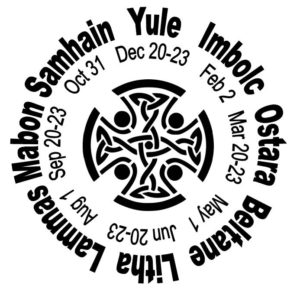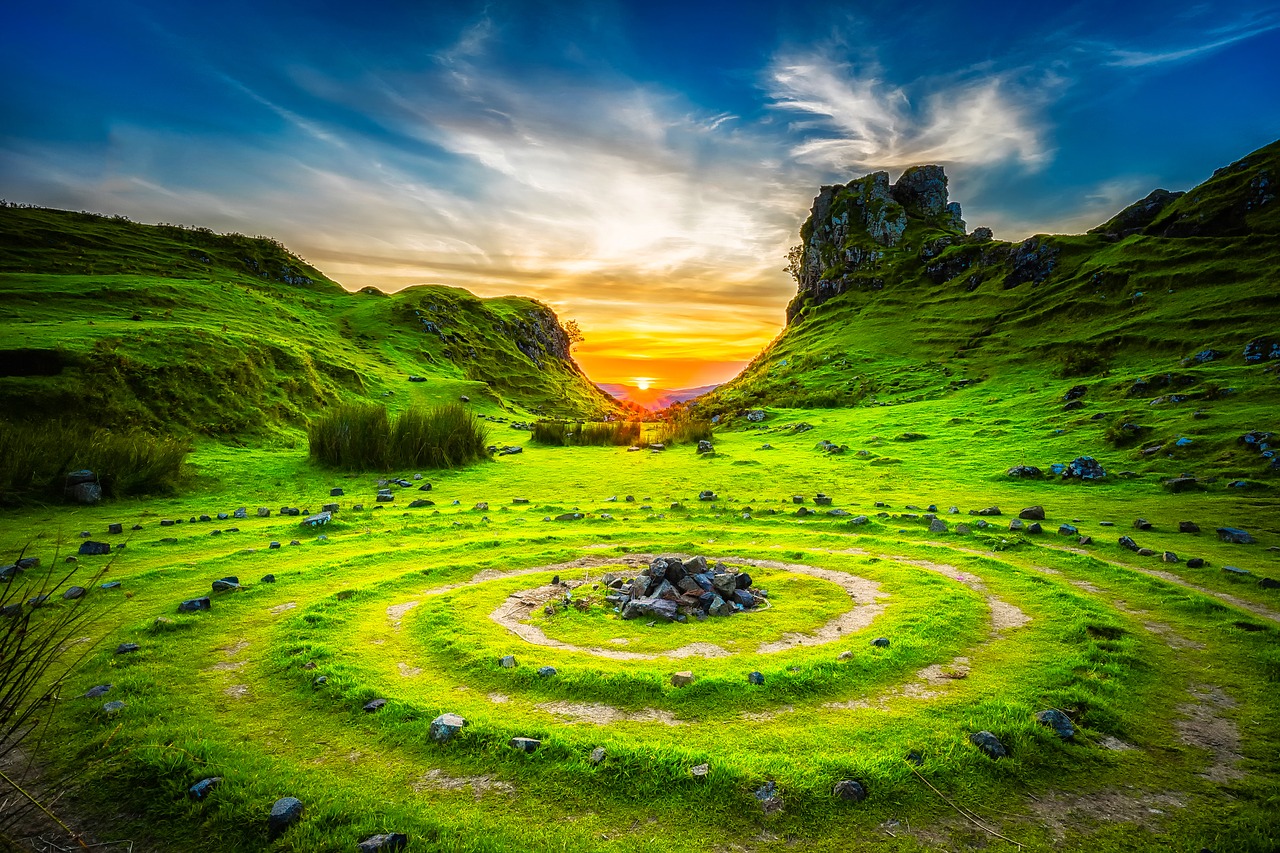Guest Blog Post by Janis McCall:
Hello, my name is Janis McCall, and I live in Scotland. I have recently returned from a wonderful class in Sedona, Arizona. I attended a workshop on using the metaphor of the Native American Medicine Wheel co-taught by my dear friends Joel Ying and Suzanne Scurlock-Durana. In this annual class, Joel talks about how we can help anchor ourselves in the world, in place and time, by meditating on different aspects of the Medicine Wheel. We can see where we are in our lives by looking at things from the different perspectives on the Wheel. This helps us widen our lens around where we would like to be or how we might move through a challenging time in our lives, giving us balance and clarity around a particular problem or project we may have.
Celtic Traditions
I come from a very different environment being steeped in the Celtic Traditions of my Native Scotland, very much in tune with the changing seasons, length of daylight and rugged landscape. I honor the Turn of the Wheel in a different way. Yet it bears remarkable similarities to the Native American Medicine Wheel being based on the observations of Nature, the Four Directions, and the changing seasons.
I live on the West Coast of Scotland on the edge of a sea loch (Scottish for lake), surrounded by mountains and forests. There are 600 people in my small community and the nearest town is 35 minutes drive away for groceries, bank, and supplies. My main entertainment and joy is admiring the changing landscape with each day and each season. Around the Spring and Autumn Equinox, the sun sets between two hills in my West window – marking the exact direction of West. At other times of the year it sets anywhere from SSW at the sea end of the loch, beyond my veggie garden (Winter Solstice) and NNW behind the Cruarchan Mountains, above Inveraray, in my North window (Summer Solstice). I have my own 180 degree markers by sunset in my windows to let me know the time of year. In my windows, I can mark the Turn of the Wheel and the changing season.
Turn of the Wheel
I can see why Ancient Celts built stone circles to mark these dramatic changes in length of daylight and progressing seasons. It was important in this part of the Northern Hemisphere. The growing season is short, and Winters are long and dark. If Ancient Celts were to grow and harvest enough to last them through winter – plus feed their animals, then they had to pay close attention to the Turn of the Wheel of the Year. They took notice of how Nature responded to it and how to work closely with it. They honored each season for its gifts, preparing for the next, and blending their own lives to work with Nature. Many small rural and island communities still follow the natural rhythms of the year because their livelihoods and food sources depend on it.
Eight Festivals
The Celtic Year is marked by 4 Solar Festivals corresponding to the Solstices and Equinoxes. These are further subdivided into 4 Cross Quarter Days marking the beginnings of seasons and correspond to more agricultural activities of planting and harvesting plus animal husbandry.
Metaphor in Modern Life
These 8 times of year (Festivals) can also be seen as metaphors for modern day life:
- When to plant the seeds of a new project or dream, allowing them to germinate and be nurtured in the quiet and the dark.
- When to nurture them, feed them and watch the first shoots spring forth.
- When to put all the energy you have into letting them burst into life.
- When to harvest the rewards of your hard work and tender care.
- On the ease down of the cycle, knowing there will be another opportunity for a new phase of this project.
- When to rest and gather resources.
- Knowing the cycle is endless and limitless.
The Celtic Year
 Yule – Dec 20-23 – The Winter Solstice, time of the shortest day, the light will return gradually from here on in. Still a time for rest and reflection, the planning stage for the year to come.
Yule – Dec 20-23 – The Winter Solstice, time of the shortest day, the light will return gradually from here on in. Still a time for rest and reflection, the planning stage for the year to come.
Imbolc – Feb 2 – The beginning of Spring, first shoots appear, promise of longer days. This is a time of new beginnings. It is Goddess Bridgit’s Day, ask her to midwife your new projects into being in the coming year.
Ostara – Mar 20-23 – Spring Equinox with equal length of day and night. New life and growth is apparent now. Spring lambs are everywhere in the fields. Celebrate by offering friends baskets filled with painted eggs and baked goodies. Your projects are taking on new life and energy.
Beltane – May 1 – Fertility Festival, beginning of Summer. Everything is bursting into life, energy runs high. People are outdoors more working communally in the fields. A time for romance and setting marriage contracts. Seal the contract by jumping the flames with your beloved after the cattle have been run between the twin fires to cleanse them after their long winter confinement. Your project is gathering momentum.
Litha – Jun 20-23 – Summer Solstice, time of the longest day, the height of Summer. In the far North the sun barely sets on this day, just dipping to the horizon and back up again. You can easily be caught up in the “summer madness” at this time, making use of every hour of daylight. Be careful not to burn out at the peak of your project, enjoy, but keep your eye on the whole cycle.
Lammas – Aug 1 – Harvest Festival. It is time to start reaping the harvest and drying/ preserving the stores to lay down for winter. A time of plenty where goods are shared and exchanged. Time to reap the dividends of your hard work.
Mabon – Sep 20-23 – Autumn Equinox with equal hours of daylight but the days are getting shorter. The stores are put away for winter and some animals are slaughtered to see the community through the long nights ahead. This is a time to ease down with your projects, taking from them what will sustain you through to the next phase.
Samhain – Oct. 31 – Honoring the Ancestors – All Hallows Eve followed by All Saints Day. This is a time to give thanks for another successful year, for lessons learned, for knowledge handed down through the generations. A time to share stories. This is the start of the long dark period, a time of reflection, rest and preparation for the next Turn of the Wheel, the beginning of a new cycle, a new project.
Festivals of the Year
This gives us 8 main festivals (Yes, there are more!) to mark the year.
In my next blog, I describe how I celebrate my Celtic year.
